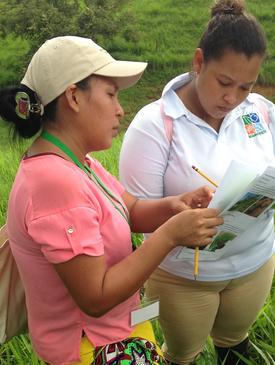Ecological Restoration Strategies for the La Villa River Watershed
Summary
The Azuero Peninsula is one of Panama’s most deforested regions. Panama’s Action Plan for the Fight Against Drought and Desertification classifies around 70% of the Azuero as dry and vulnerable to degradation. Within the Azuero Peninsula, the La Villa River Watershed (LVRW) is a place that deserves special attention. This watershed is a vital natural resource that provides potable water to over 200,000 residents in three major cities, as well as water for crops and cattle production. But with the loss of over 78% of the LVRW’s forest cover due mostly to conventional agriculture and ranching practices, farmers are experiencing shortages of water for human consumption, crops and livestock. Without adequate tree cover and with the widespread use of agrochemicals, water that would have filtered through the watershed now carries sediments and agricultural runoff downstream. The consequences include contaminated water supplies, decreased agricultural productivity and increased vulnerability to changing climatic conditions.
For farmers living within the LVRW there remains little accessible information, training or incentives for them to adopt more sustainable land use practices. Sustainable land management alternatives exist, such as silvopastoral systems (SPS), which are a form of agroforestry that integrate trees, forage shrubs and livestock production and do not require agrochemical inputs. These systems are particularly appealing since they enable farmers to maintain and enhance traditional livelihood practices in a more environmentally sustainable manner. Yet current capacity development opportunities within the LVRW focus on enhancing conventional management approaches through increased agrochemical use and technologies that are not aligned with the local culture.
Over a period of five days, this course aims to provide the practical basis to understand how to implement forest restoration strategies in cattle ranching landscapes via SPS. This field course will be facilitated in ELTI’s training landscape in Azuero, which will convey ecological principles through its interpretative trail network and demonstration sites. This course will be offered to landowners and extension agents working in the La Villa River Watershed, who will be implementing silvopastoral model farms in their communities. Participation will be by invitation only.
This course was offered at no cost for 13 selected participants thanks to the support of The Conservation, Food and Health Foundation and Arcadia, a charitable fund of Lisbet Rausing and Peter Baldwin.
Content
The course content is divided into six thematic modules, which include introductory lectures with corresponding field-based observations, exercises and analysis:
Module 1: Forest ecology and the provision of ecosystem services
- The role of forests to provide ecosystem services
- Forest dynamics, succession and natural regeneration
- Key species and traditional uses
Module 2: Forest degradation and limitations for restoration
- Regional drivers of degradation in Azuero
- Degradation of ecosystem services
- Socio-economic consequences of forest degradation
Module 3: Strategies for restoring ecosystem services in cattle ranching landscapes
- Clarify restoration goals and appropriate restoration models
- Introduce the conceptual model for restoration
- Forest restoration methods (range of restoration options: Passive - Active)
Module 4: Sustainable cattle ranching: Environmental and productive contributions
- The importance of biodiversity in agro-landscapes
- Introduction to silvopastoral systems (SPS)
- The establishment and management of SPS
Module 5: The role of community organizations with forest restoration
- The need, development and dynamics of community-based associations
- Best practices to implement and manage projects
- Strategies to disseminate projects to other stakeholders
Module 6: Final exercise: Developing a model farm plan
- Defining restoration objectives
- Identifying biophysical and social variables
- Selecting adequate restoration strategies


